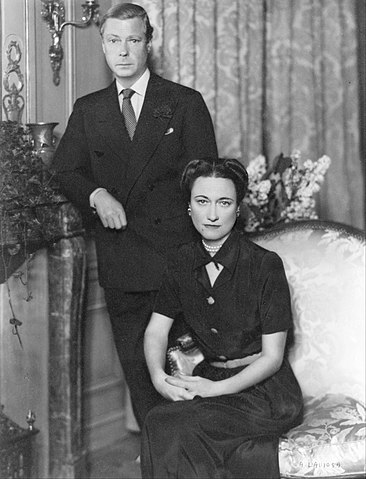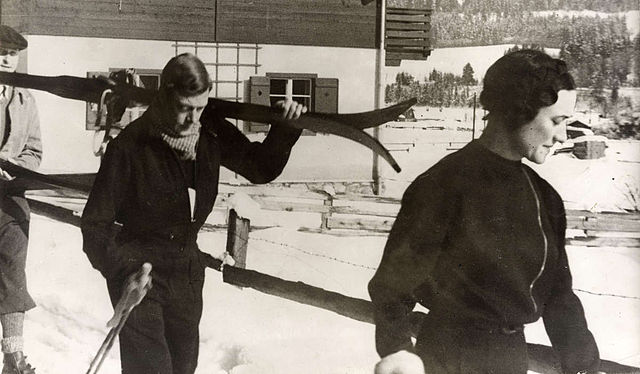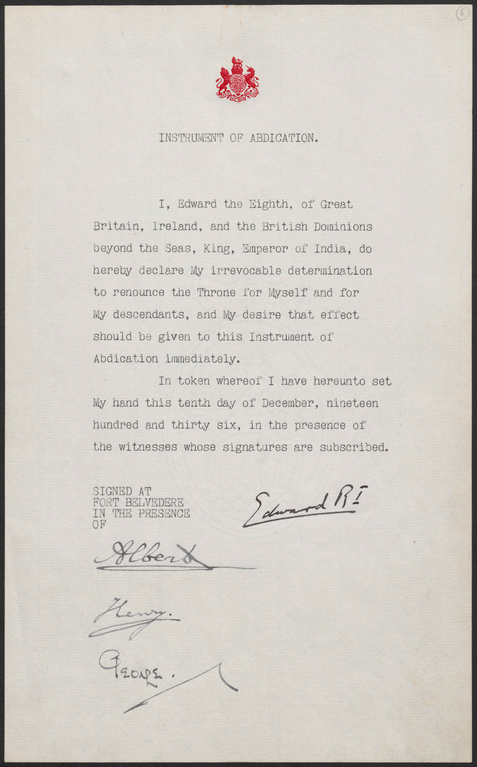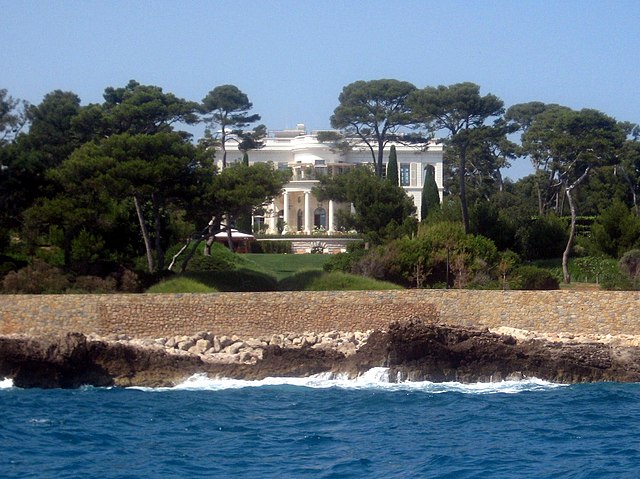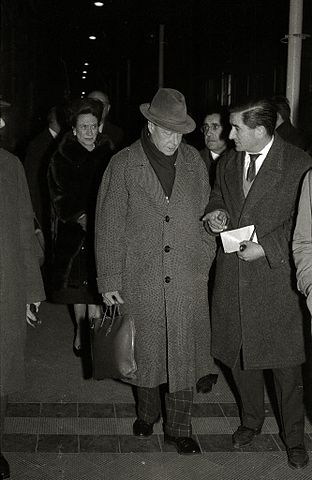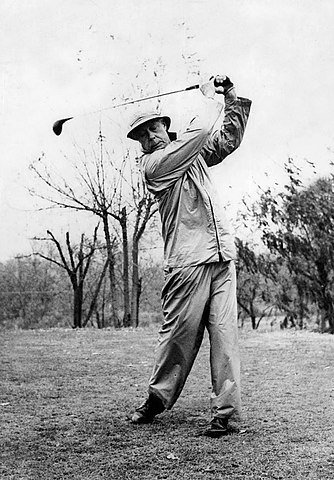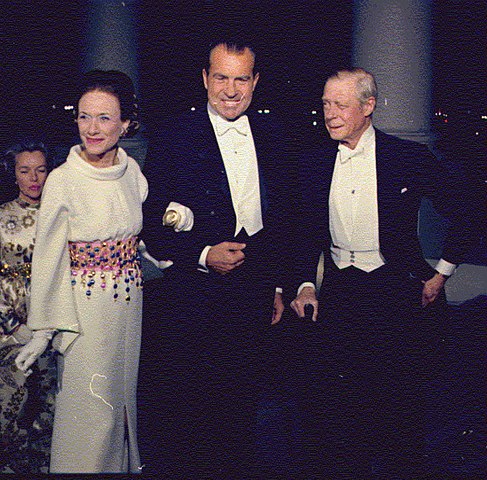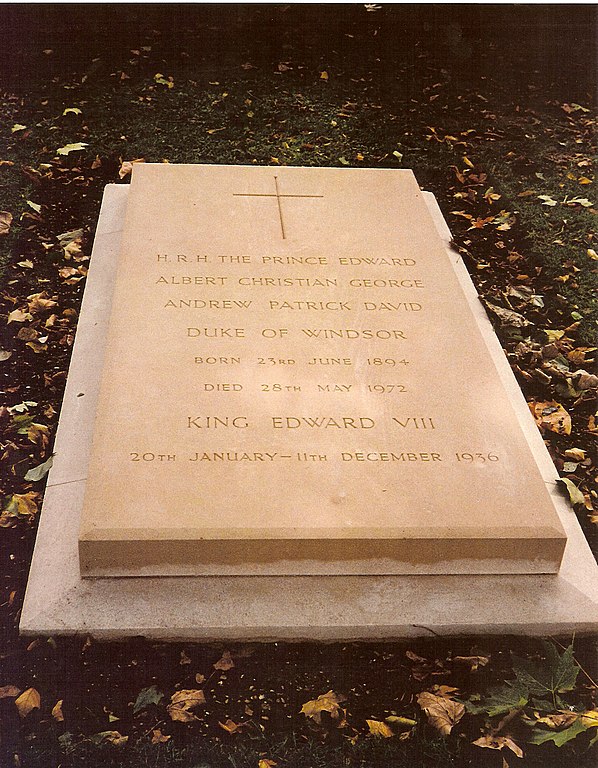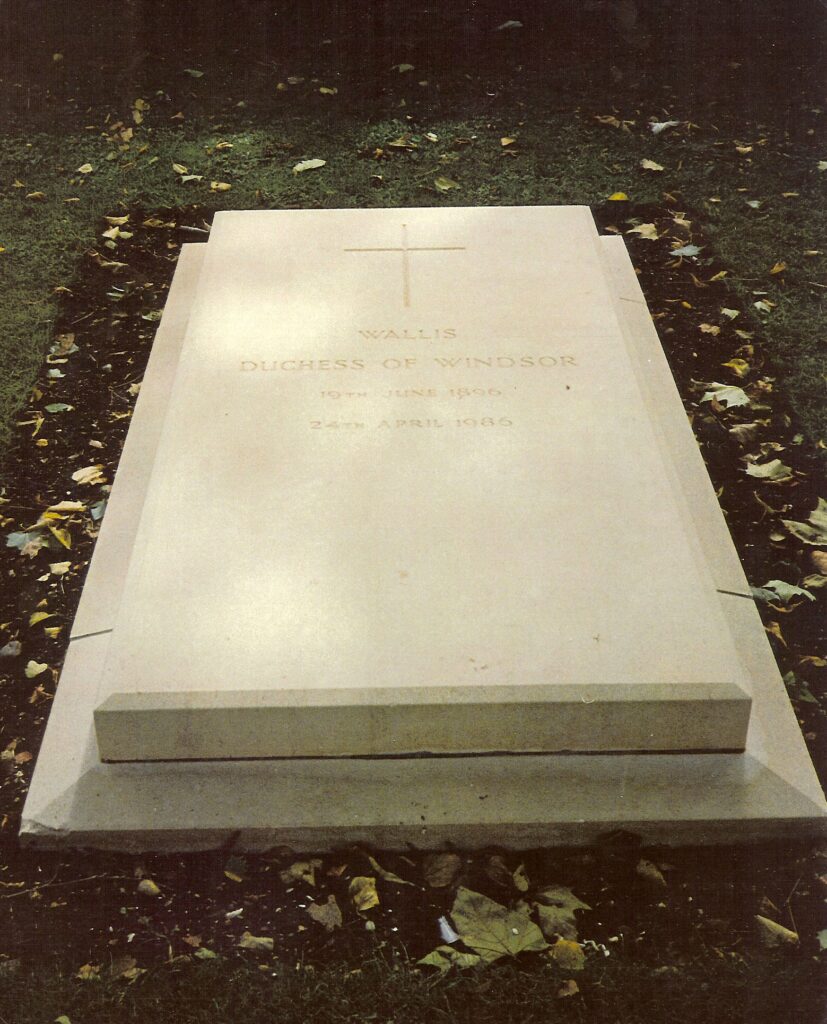Long before Harry and Meghan, a much more serious crisis and scandal enveloped the British monarchy and the House of Windsor, the abdication of Edward VIII
By mid-1934, even British high society insiders were aghast at what, “the little man,” as David was scornfully known as behind his back, had actually taken up with. When the Royal family deliberately deleted the Simpsons from the Royal guest list for the wedding of David’s brother, George, in November of 1934, the Prince of Wales personally interceded to get them reinvited. Probably thinking that a good offense is the best defense, Wallis showed up in expensive jewelry and a tiara that certainly her husband could not afford and could have only been gifted by David. Outraged, King George V then personally barred the couple from any subsequent, official Royal events but the relationship blatantly continued, with Wallis receiving cash and gifts, usually gems that today would be on the order of tens of millions of dollars.
Finally, Edward called her back and personally told her that the abdication was inevitable. Wallis Simpson’s unromantic and blunt response, recorded by French secret police, was predictable. “You goddamned fool!” Inexplicably, Edward decided to give up his throne, allegedly over Wallis Simpson, without even involving her in the decision or even formally asking her to marry him during this time period or even subsequently. On December 11, he proceeded with his famous speech, explaining his decision to abdicate, allegedly over his relationship with Wallis Simpson. Even his subsequent departure from Britain was haphazard, Edward now officially the Duke of Windsor, winding up at an Austrian mansion owned by a Rothschild, a personal favor to Lord Brownlow. Because Wallis Simpson was still technically married, the Duke and Wallis would have to remain separated until the Simpson divorce was final.
With no diplomatic or professional responsibilities, the Windsors than turned to figuring out exactly where they wanted to live, eventually settling upon the the Chateau de la Croe, a large mansion sized estate on the Cap D’Antibes. Initially, this was where Wallis had wanted to get married, in May of 1938, they leased the property. Shortly thereafter they began the process of ingratiating themselves with whatever local members of French and American members of high society would accept their dinner invitations, the Duchess spending most of her time planning these dinner events. For a year and a half, life revolved around furnishing their new home and their socializing, events that always began with a formal introduction by servants of Wallis Simpson as Her Royal Highness. If the Duke and Duchess were living the lives of the idle rich this was essentially on someone else’s dime.
As the sixties dawned, shunned by the British aristocracy, no longer of much interest to anyone in the US other than facilitators of best dressed lists, on the eve of a generation more interested in personalities like the Beatles, the Windsors began to fade from public relevance. Other than the occasional White House invitation, they became politically invisible.
As the sixties ticked by the Windsors devolved from world famous celebrity status to an existence seemingly out of a Dickens novel. Despite their immense wealth, they openly paid their servants twenty per cent less than the going rate stating that it was a privilege to work for them. This despite homes crammed with every possibly amenity for both the Duke and Duchess and their guests, toilet tissue literally unrolled and folded into squares.
By then the Duke’s health was deteriorating rapidly. One eye was mostly closed due to complications from cataracts, circulatory issues were now pronounced after a lifetime of heavy smoking which also eventually caused throat cancer, arthritis forcing him to limp along with a cane and preventing him from golf or even working in the garden. By May of 1972, the end was clearly approaching, signaled by the first and only visit to the Duke’s Paris home by Queen Elizabeth II, her husband Prince Phillip and accompanied by Prince Charles. It lasted a perfunctory thirty minutes. To one of the last of the many American socialites who spent time with the Windsors in their last years he reflected, “The duchess gave me everything that I lacked from my family. She gave me comfort and love and kindness.”
The Duke of Windsor’s body was flown to Great Britain and dignified with the usual ceremonies, including lying publicly in state at St. George’s Chapel, on the grounds of Windsor Castle the traditional burial place for British Kings and Queens since Henry VIII. The Duchess of Windsor was flown to these ceremonies separately where she interacted with the rest of the Royal family who treated her with chilly dignity. Although as a former King of England the Duke of Windsor was entitled to burial at St. George’s, he was instead interred by previous agreement at the Royal Burial Ground at Frogmore Estate. This cemetery was established to handle the overflow from the Royal Vault at St. George’s as space there became restricted for actual monarchs and those in direct succession. Frogmore Estate is owned by the British Royal family and is only open to the public six days out of the year. In addition, the royal burial ground which contains the Duke of Windsor’s gravestone is restricted from public access by a high iron fence, for the former Edward VIII a kind of British Royal Siberia.
The Duchess of Windsor’s modest April 29, 1986 funeral ceremony at St. George’s Chapel was well attended by members of the royal family. However, her coffin had no flag or standard and its plaque omitted the HRH title before her name inscribed as Wallis, Duchess of Windsor-1896-1986. The hearse containing her coffin proceeded along private roads to exclude any public acknowledgement. Only fifteen individuals were present at her graveside ceremony, including the Queen, Prince Philip, Prince Charles and Princess Diana, but the Queen Mother on the advice of Queen Elizabeth did not attend. The Duchess of Windsor was buried side by side with her husband at Frogmore, the only commoner in the cemetery, her headstone also omitted the HRH title, the Duke and Duchess of Windsors’ social, political and geographic exile now eternally complete.
Podcast: Play in new window | Download
Subscribe: RSS

